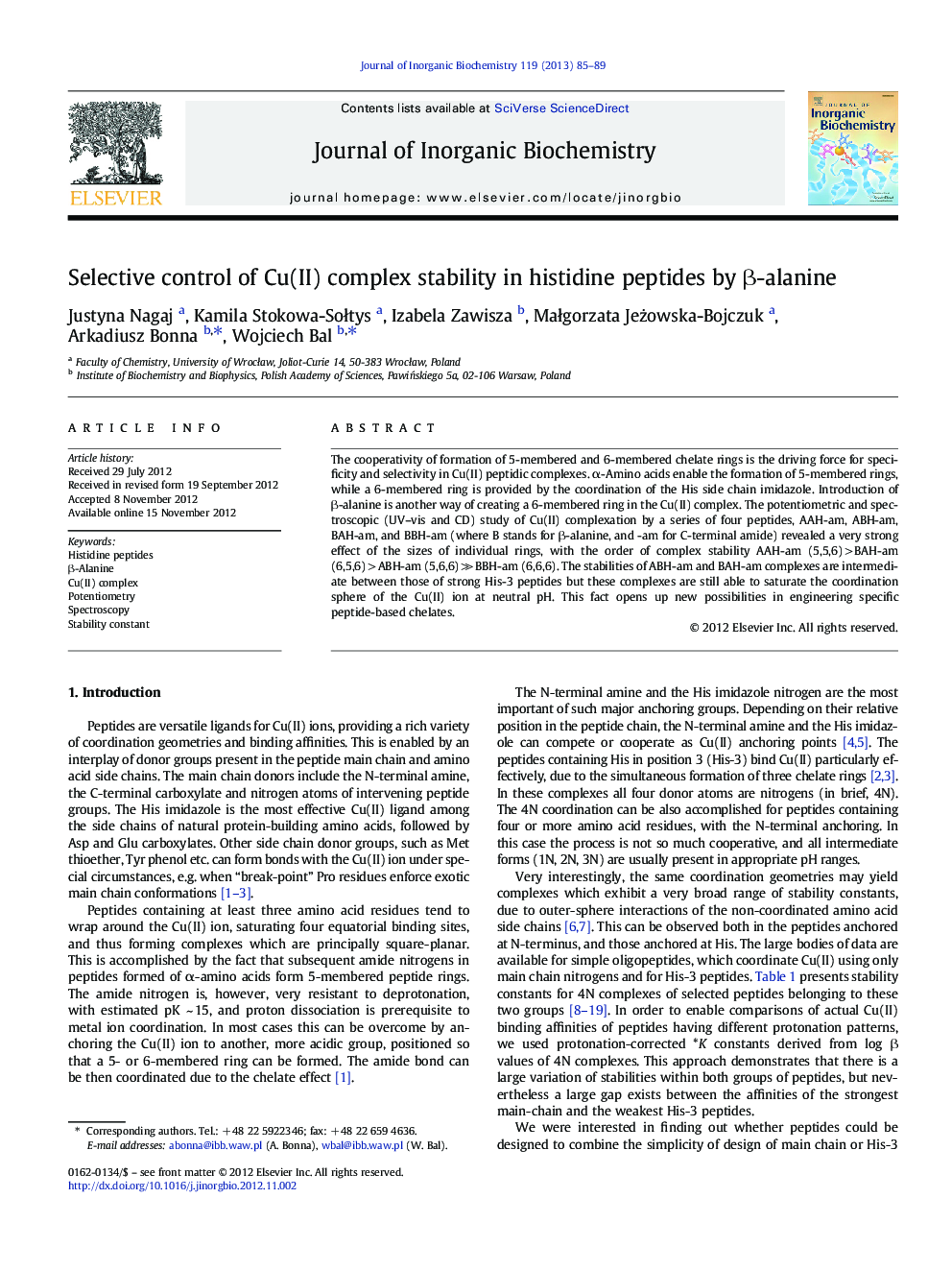| Article ID | Journal | Published Year | Pages | File Type |
|---|---|---|---|---|
| 1317692 | Journal of Inorganic Biochemistry | 2013 | 5 Pages |
The cooperativity of formation of 5-membered and 6-membered chelate rings is the driving force for specificity and selectivity in Cu(II) peptidic complexes. α-Amino acids enable the formation of 5-membered rings, while a 6-membered ring is provided by the coordination of the His side chain imidazole. Introduction of β-alanine is another way of creating a 6-membered ring in the Cu(II) complex. The potentiometric and spectroscopic (UV–vis and CD) study of Cu(II) complexation by a series of four peptides, AAH-am, ABH-am, BAH-am, and BBH-am (where B stands for β-alanine, and -am for C-terminal amide) revealed a very strong effect of the sizes of individual rings, with the order of complex stability AAH-am (5,5,6) > BAH-am (6,5,6) > ABH-am (5,6,6) ≫ BBH-am (6,6,6). The stabilities of ABH-am and BAH-am complexes are intermediate between those of strong His-3 peptides but these complexes are still able to saturate the coordination sphere of the Cu(II) ion at neutral pH. This fact opens up new possibilities in engineering specific peptide-based chelates.
Graphical abstract6-Membered chelate ring of β-Ala enables control of Cu(II) complex stability.Figure optionsDownload full-size imageDownload as PowerPoint slideHighlights► His-3 peptides coordinate Cu(II) with high binding constants. ► Introduction of β-Ala in such peptides decreased the Cu(II) binding constant. ► This effect is due to interplay of fused chelate rings. ► The 4-nitrogen coordination pattern of the Cu(II) ion was largely preserved. ► These features make β-Ala peptides good candidates for specific Cu(II) chelators.
